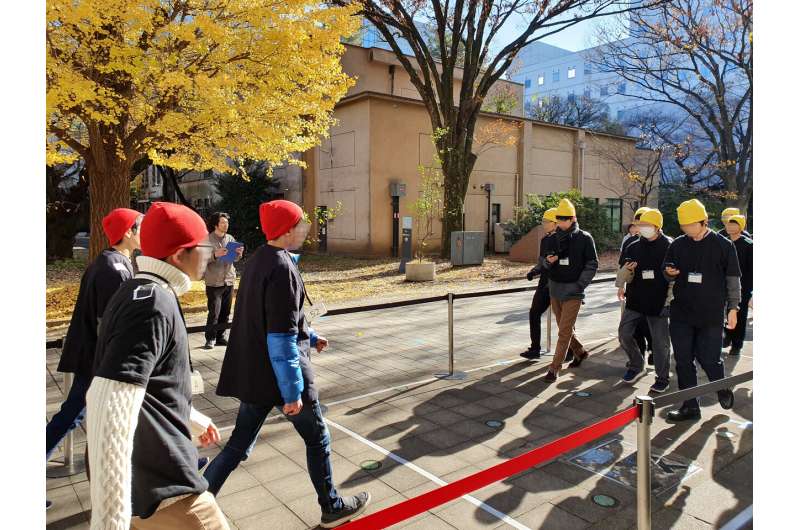March 18, 2021 report
Experiments show distracted pedestrians can slow people behind them

A team of researchers from the University of Tokyo and Nagaoka University of Technology has found that distracted pedestrians walking on crowded sidewalks can slow the pace of those people behind them. In their paper published in the journal Science Advances, the group describes experiments they conducted with pedestrians distracted by their smartphones and what they found.
Prior research has shown that when people walk along crowded sidewalks, they tend naturally to form columns of pedestrians made up of people following the people walking ahead of them—some of the columns go one direction, some the other. Such columns have been found to form during initial contact as those people at the front of a crowd negotiate an initial path with one another. The people behind them simply follow the path that the leader forged. In this new effort, the researchers have found that if a person at the front of such a crowd is distracted, it can prevent the formation of columns, resulting in slowed pedestrian traffic for all involved.
To learn more about the impact of people using their smartphones while walking on crowded sidewalks, the researchers enlisted the assistance of two groups of 27 volunteer pedestrians. One group was asked to wear yellow hats, the other red. The researchers then filmed the action from above as the two small crowds of people began walking and met one another head-on, on a city sidewalk. The researchers ran the exercise several times, varying the action by giving a smartphone to certain individuals.
In watching the videos, the researchers found that if a person at the front of the crowd was given the smartphone, and they were distracted by using it, their actions could disrupt the movement of the crowds as they merged. This was because there was no negotiated path between the person with the phone and the person they encountered. A single person, it was found, could prevent the formation of columns, disrupting the smooth pedestrian walking paths. But they also found that if they gave the phone to someone farther back in the crowd, there was little to no impact on crowd movement. The distracted phone user was able to follow the person ahead of them, keeping the column that had formed intact.
More information: Hisashi Murakami et al. Mutual anticipation can contribute to self-organization in human crowds, Science Advances (2021). DOI: 10.1126/sciadv.abe7758
Journal information: Science Advances
© 2021 Science X Network




















